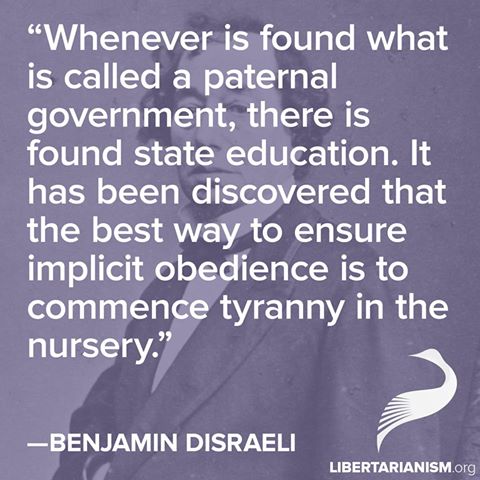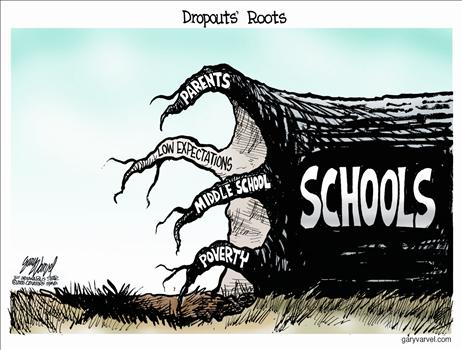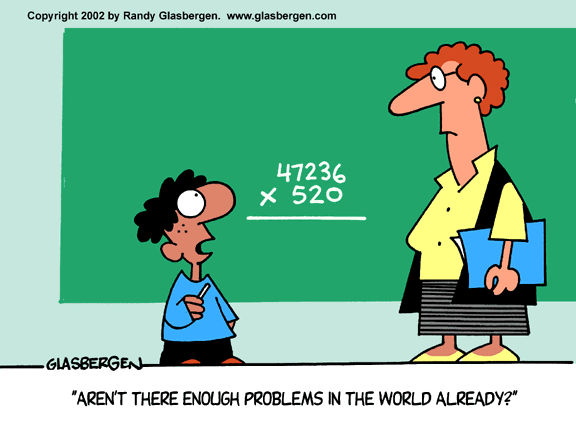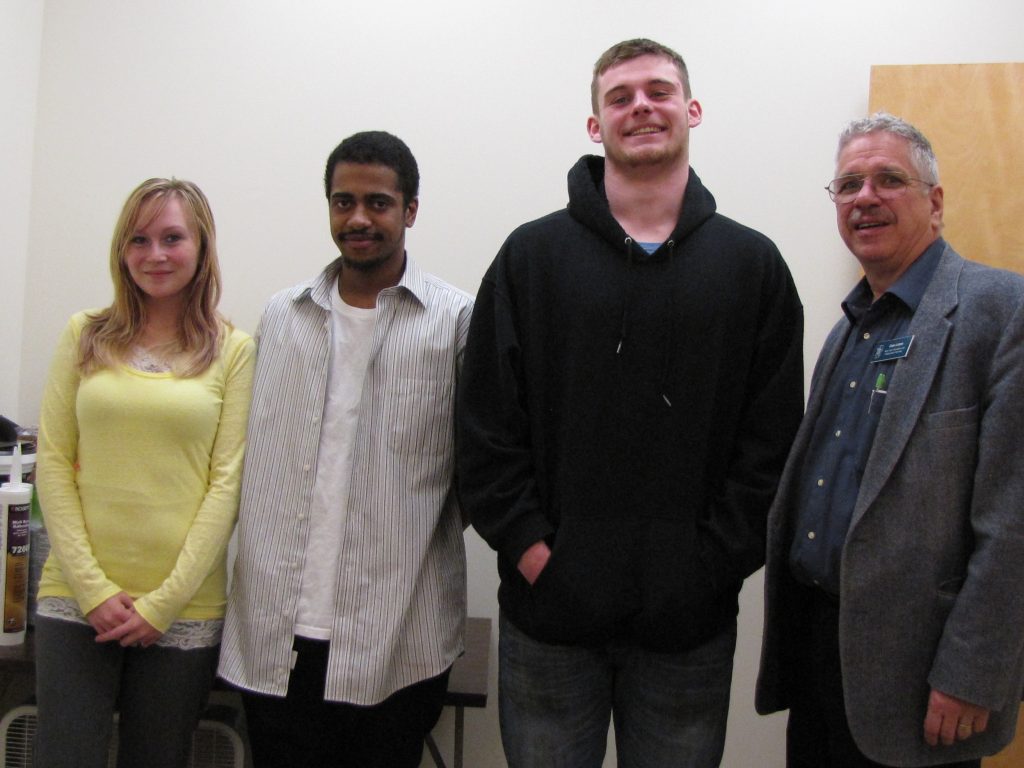…it’s not just for “Drop-outs.”
Update of story first published March 14, 2016 NorthernRight.com

As Alaska Legislators debate how much Protection Money they will again award the Union Cartel that throttles our failing government education factories, perhaps Alaskans should accept what many intelligent parents have learned: The GED is set at 12th grade and students with that credential likely know more–and have better chances in life–than those educated at obscene costs through traditional Alaska public schools.

This is what any parents considering moving to Alaska can quickly learn: our governor is a former teacher and our public schools are among the worst in the nation. Whatever else Gov. Dunleavy accomplishes in two terms, this will be his legacy for generations to come: HE COULD HAVE MADE A DIFFERENCE.
As a certified Alaska teacher I reflected on
Hope from the GED test in print nine years ago.
Since then the test has gotten better,
our district education factories worse.
From my original story:
A couple of years ago I went to the dentist for an appointment to clean my teeth. In the past, when I had gone to this particular “Dental Group” for a cleaning I would walk out having spent upward of $500 for x-rays, analysis of my teeth, and cleaning. This time, upon sitting in the dental chair, I told the self-important dental assistant that I only wanted a cleaning—we could schedule the other stuff at a later time. She left the room, brought back the Office Manager who explained nicely that without doing the x-rays the dental assistant couldn’t do the cleaning. I got up out of the chair and left.
My conclusion was that unless this particular enterprise was making $500 for me patient to sit in that chair they didn’t want my business.
It left a bad taste in my mouth.
My new dentist is a guy in private practice near my Eagle River home and receptive to what dental work I want done. My wife and I both took advantage of his New Patient Special Offer! and after a couple of years of not being to any dentist we now needed some things done. Without dental insurance we are going to have to put the dog out at stud to pay for the work, but we are happy to once again have a dentist who cleans our teeth and recognizes we don’t need gold-plated dental care at this phase in our lives.
This dentist has a family and works a second job to supplement his private enterprise endeavor. Our inflated Alaska economy has apparently attracted quite a few dentists who are fresh out of school and ready for their Alaska Adventure. Being a long-time Alaskan this dentist takes the same long view of his career investment in Alaska’s politically-dependent economy as we have ourselves taken over the decades.
At the end of my most recent visit to the dentist I revealed that I am a certified teacher and that after working in the public system I gravitated to teaching Adult Basic Education (ABE) for adults needing to get a GED, improve skills for training, or to enter University. He then revealed to me that he had gotten his GED and exclaimed: “Look how far it has taken ME!”
The Old GED
The General Equivalency Degree was originally established during the early 1940s for military personnel returning from serving their country during World War II. Many left home before graduating high school, but service in war had been an education. Now they needed meaningful work. As public education bustled with baby-boomers seeking their American Dreams in schools designed as education factories after the war, many who were unable to be successful in public education either quit, gave up or were kicked out. There may be other reasons for needing a GED, but Alaska has traditionally suffered a high number of “drop-outs.” Today somewhere between 60-80 percent of public school students who started in kindergarten graduate high school in Alaska.
[1]Public High School Four-Year OnTime Graduation Rates and Event Dropout Rates: School Years 2010–11 and 2011–12

I graduated in the exact middle of my East Anchorage High School class of 1969. It was a traditional education that was good enough to allow me to enter Anchorage Community College and take 100-level classes. I know from my teaching practice today that many Alaska high school graduates cannot do that. Those students must pay college rates for high school remediation at University of Alaska Anchorage. I decided to become a teacher at mid-life because I had not regarded education very highly until I went to college, and felt I might make a difference in helping others who needed to understand the rewards available from education.
I began my teaching career in Juneau. I had lived there 20 years before returning to Anchorage in 2003 with a Type A Alaska Teaching Certificate.
A private company has always run the GED under a federal government contract. In Alaska the state also contributes to the GED investment. The GED test is designed by educators and managed as a dental practice might be run; applicants sign up, are given an evaluation of their academic abilities, and classes are offered so students may increase their skills in the four academic areas tested: Language Arts, Math, Social Studies and Science. These classes have often been offered by volunteers, working in churches or makeshift classrooms, who provide workbooks and assistance to persons seeking to improve their ability to provide for their families. It’s what is known as “self-directed learning” and it is geared to the individual, although groups of individuals often form into classes of ABE students.
[2]What is Self-Directed Learning?
The entire GED test is primarily a reading comprehension test. Math specifically requires an ability to read and understand word problems to solve the math. Basic math skills are therefore fundamental to passing the GED test.

Since 1979 the GED test has been “updated” every 10 years or so to make it current. Students took the tests while observed by an approved proctor, who set the timer and handed out bubble sheets for students to fill out indicating answers to questions from a book. Answer sheets were then packaged and shipped to a correcting factory in Oklahoma. During the early 2000s update of the GED test an essay requirement was added. Test takers were given a writing prompt to respond to with an essay. This required two readers to assess that piece of writing, according to a rubric, and arrive at a negotiated grade. Teaching writing became another challenge for GED instructors then, but in my experience as an instructor since 2009, math remains the biggest barrier. A majority of Alaska students who seek to obtain their GED after leaving the public system–at any point in their school career–are deficient in math.
Examination of available “Practice Tests” over time have revealed to people working in programs providing ABE services what specific areas of math students need to know to pass the test. During the enrollment process students are given a Test of Adult Basic Education (TABE) to establish Comprehensive Math and Applied Math skills.
[3] TABE Test Study Guide
This simple timed test takes a little more than an hour in front of a computer screen and produces a printout of specific skills and deficiencies with grade level indicators for each. It is remarkably accurate. Review of test results provides an overview of what things need to be addressed, and what things reinforced, to expect to pass the GED Test. Until 2014 the overall TABE level required to pass the GED was grade 9.

Imagine shutting down all ASD secondary schools and diverting those resources to k-8 instruction, with a GED.com testing center at the Carol Comeau Administrative Taj Mahal.
The New GED
Students who have not successfully gained a high school diploma from their local school district, or are new to Alaska without an adequate education credential, need to know specifically where they are deficient academically. Jobs not requiring a high school diploma or GED are largely going to people who do not speak fluent English. Those persons require English As A Second Language training before they can take the GED, although limited GED instruction is available in Spanish. Many without a GED are capable of doing a wide range of employable tasks but advancement on the job can be limited as others with a high school or GED credential enter that same workplace.
Once ABE applicants know their academic needs—and it is usually no surprise to them what is missing—they must consistently work to learn the material necessary to expect passage of the GED. Many sign up because they are told to do so by a social worker, case manager, or well-meaning friend, but unless they are willing and able to do the work they inevitably continue to be employed in menial jobs and survive as best they can.

As their kids get along in the public system these
parents cannot help with homework.
The New GED was implemented after a wholesale overhaul by GED Testing Services, Inc. in January of 2014. It is normed at 12th grade; including GED-With-Honors for students who excel. The test is given at an approved Testing Center where students pre-pay for the test and take it on computers dedicated to that purpose. Employers are quickly learning that GED graduates have proven skills.
My proudest Events as a GED Teacher were when
Home-Schooled youth came in and aced the GED!
Parents can now go online and download practice tests to see how their children might do on the actual test. Those tests can also serve as a primer of what information must be known to pass the test.
Some parents are learning they can enroll students uninterested in high school as early as 16 years old. The test is comprehensive and provides a range of interactive ways to post answers beyond simple paper-and-pencil options of the past.
Students log into the GED.com website, pay and schedule individual tests. Results are posted directly. Test require payment of a fee, previously $30, with a $10 re-test fee for a score less than 150. Upon failing the test a printout provides an evaluation of what concepts were missed–including specific page numbers in the Kaplan GED Test book–requiring further study. Practice tests costing a modest amount per subject also provide a direct opportunity for students to know the likelihood of passing the GED, again with references to the book for further study.
In my experience, students who are motivated are responsive to instruction in a setting that is nothing like their public education experience. Autonomy is the goal of meaningful education and this system promotes taking responsibility for one’s own future.
Conclusion
ABE is not part of the public education system. It is not overseen by the Alaska Department of Education, with its state school board, politically-motivated commissioner and mammoth bureaucracy annually dispensing one of the largest expenditures of state money to 54 school districts around the state.
I personally introduced Michael Dunleavy, when he was a state senator, to the ABE program during a statewide conference luncheon of the organization supporting this alternative to our failed public education system. He expressed surprise that this education option is part of the Alaska Department of Labor, run by a single manager and a small shop in Juneau, issuing contracts to groups around the state to provide services to Alaskans who did not succeed in achieving their high school diploma, or who have arrived in our state from another place with educational opportunities which have not prepared them for the American workforce.
Make no mistake about it: The goal of the GED is to get Alaskans into the workforce. Every job offered in Alaska requiring a high school diploma also accepts a GED.

These Mat-Su students completed a career readiness course offered after they passed their GED.
Alaska public education as an institution is in obvious decline. While continuously paying among the top in the nation for teachers and administrators, our academic standing is at the bottom. Plenty of options are now available and smart parents are abandoning government schools.
We will never pay teachers and administrators in government education factories enough.
[4]State comparisons for education funding
Perhaps it is time for simplification of public education options. Fewer school districts with hub high schools might be a cost-saving option. Alaska decision-makers owned by the teacher union do not want parents in charge of their kid’s education, but good parents always reinforce and supplement what happens at school. Instead of continuing to throw good money after bad, Alaska Lawmakers must change the status quo to find effective new ways to address this state’s public education toothache.
Gov. Dunleavy is a former public educator who came here for the same Alaskan Adventure most teachers come for. Don’t expect Dunleavy or the Legislature to do anything to address this elephant in the room.
References:
[1]Public High School Four-Year OnTime Graduation Rates and Event Dropout Rates: School Years 2010–11 and 2011–12
http://nces.ed.gov/pubs2014/2014391.pdf
[2]What is Self-Directed Learning?
https://www.betterup.com/blog/self-directed-learning#:~:text=%E2%80%9CSelf%2Ddirected%20learning%20describes%20a,appropriate%20learning%20strategies%2C%20and%20evaluating
[3]TABE Test Study Guide
https://www.studyguidezone.com/images/tabeteststudyguide.pdf
[4]State comparisons for education funding
https://nces.ed.gov/programs/digest/d13/tables/dt13_211.60.asp
